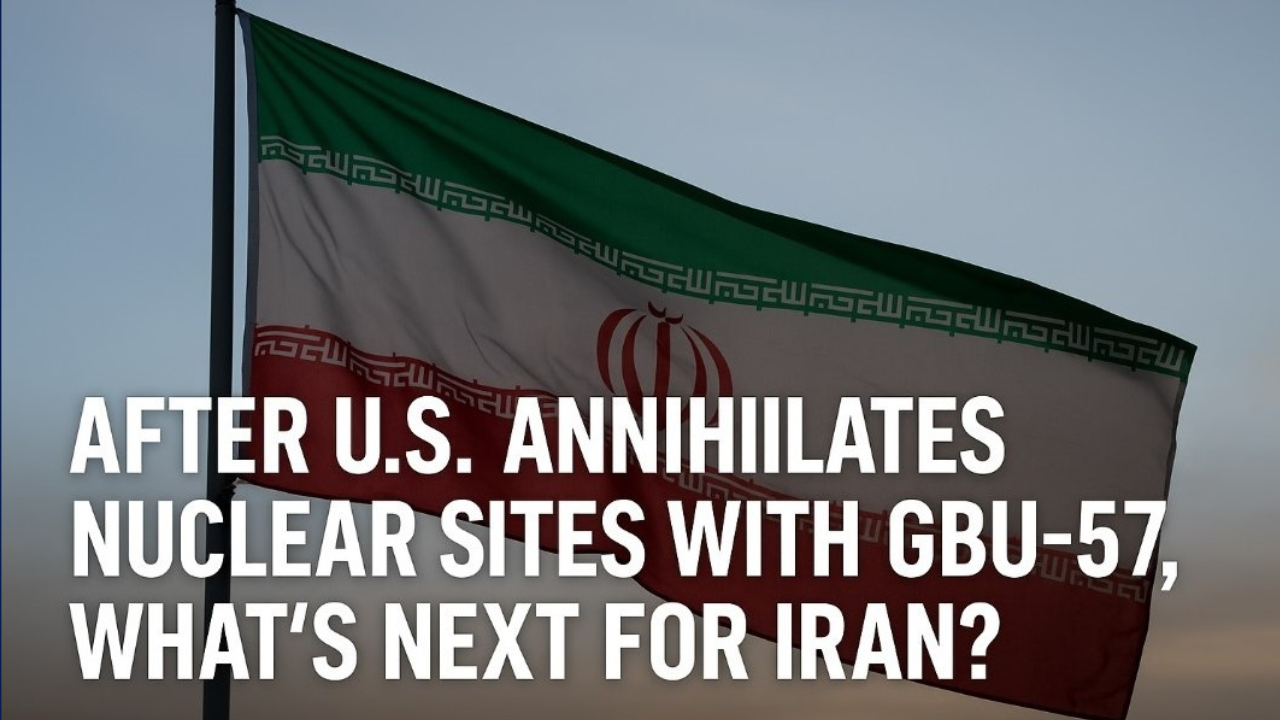After U.S. Annihilates Iran Nuclear Sites with GBU-57, What’s Next for Iran? Retaliate, Regroup—or Surrender?
Tehran/Washington, June 23, 2025 — The United States’ unprecedented use of the GBU-57 Massive Ordnance Penetrator to destroy Iran’s top nuclear facilities at Fordow, Natanz, and Esfahan has sent shockwaves across the Middle East. While the U.S. and Israel hailed the mission as a “defining blow” to Iran’s nuclear ambitions, Tehran now faces an urgent dilemma: retaliate forcefully, regroup strategically, or surrender quietly.
With its uranium enrichment dreams vaporised and its military command centres destabilised, Iran is undeniably on the back foot. Supreme Leader Ayatollah Ali Khamenei has reportedly retreated to a fortified bunker, and the Islamic Revolutionary Guard Corps (IRGC) is scrambling for options.
💣 Retaliation Options for Iran: What Could Be Next?
1. Naval Warfare in the Strait of Hormuz
It’s most likely counterstrike strategy revolves around the Strait of Hormuz, through which nearly 20% of the world’s oil passes. With its fast-attack boats, naval mines, and missile-equipped drones, Iran could try to choke the global oil supply, triggering energy market chaos and global inflation.
“It’s the closest thing to an economic nuke,” says Middle East analyst .
2. Hitting U.S. Military Bases in the Gulf
It could target U.S. bases in Bahrain, Kuwait, or Qatar, using its extensive ballistic missile arsenal. The Al Udeid Air Base in Qatar, a strategic hub for U.S. operations, is considered a vulnerable yet high-risk target due to its importance and the possibility of massive U.S. retaliation.
3. Proxy Warfare via Hezbollah and Houthis
It has historically relied on proxy groups for asymmetric warfare. Hezbollah in Lebanon and Houthi rebels in Yemen could be activated to attack Israel or Saudi oil infrastructure, respectively. Such deniable operations provide Iran with cover while keeping tensions high.
4. Cyber Warfare
It’s cyber capabilities are not to be underestimated. A cyberattack on U.S. financial systems, defence infrastructure, or energy grids could be Iran’s low-cost, high-impact revenge mechanism. Experts warn that digital retaliation may already be underway.
🕊️ Could Iran Surrender or Negotiate?
Despite fiery rhetoric, the sheer scale of destruction dealt by the GBU-57 airstrikes has left Iran’s leadership shaken. The nuclear dream painstakingly built over two decades now lies in rubble.
While Iran publicly rejects surrender, private backchannel diplomacy may be intensifying. Sources in Geneva suggest that European diplomats are urging it to de-escalate, fearing regional meltdown.
🧨 Iran’s Dilemma: Retaliate and Risk War or Retreat into Silence?
It is in a classic catch-22: any hard military response could trigger overwhelming retaliation from the U.S. and Israel, risking regime collapse. Doing nothing, however, would be seen as a humiliating capitulation in the eyes of its regional supporters and domestic hardliners.
“This is the first time since the 1979 revolution that It has been dealt such a public and humiliating blow on its own soil,” says security expert .
🎯 Conclusion: All Eyes on Tehran
With its nuclear facilities demolished, top leaders in hiding, and its regional credibility in question, Iran faces a defining moment. Whether it retaliates in the shadows or seeks peace, the next 48 hours will likely decide the trajectory of Middle East geopolitics for years to come.
#IranUSConflict #GBU57 #MiddleEastTensions #TehranBackfoot #StraitOfHormuzCrisis
Recent Posts
- US Bombs Iran Nuclear Sites as Trump Declares ‘Now Is the Time for Peace’: A Turning Point in the Middle East Conflict
- Saraswati World School Celebrates International Yoga Day 2025 with Grace, Unity and Wellness
- Shaken and Stirred: The Great Protein Supplement Hoax
- HDFC Bank Eyes ₹9,373 Crore Windfall as HDB Financial Services IPO Breaks Records
Discover more from
Subscribe to get the latest posts sent to your email.








2 COMMENTS